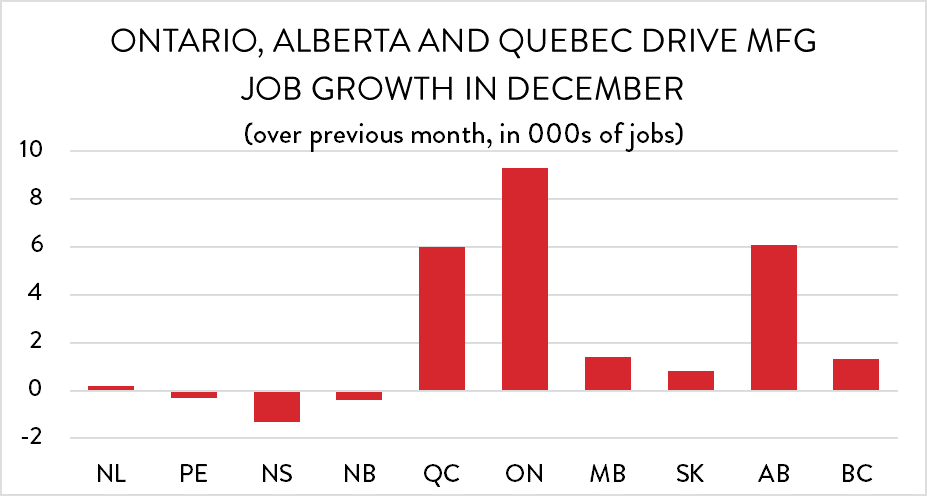Labour Market Trends
Labour Market Trends
Surge in manufacturing employment helps the job market eke out small gains to end the year
After a tremendously positive showing in November, Canadian labour markets essentially hit the pause button in December. Only a surge in manufacturing employment kept overall jobs numbers steady compared to the previous month.
All told, there were just 9,300 net new jobs created last month. For a labour market that employs 18.8 million people, that increase is little more than a rounding error of 0.05 per cent. However, given that employment increased by a record 94,100 positions in November, the fact that it merely held steady a month later isn’t cause for major alarm.
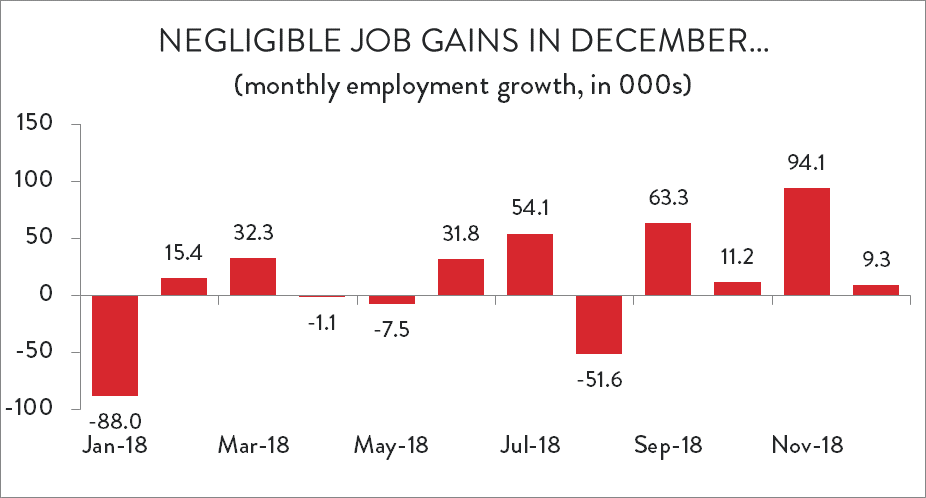
Increase seen in part time jobs
Employment wasn’t the only indicator to hold fast in December. November’s record job-creation numbers did nothing to encourage more Canadians to enter the labour force – the participation rate held steady at 65.4 per cent. And the unemployment rate was unchanged as well, remaining at a record-low 5.6 per cent.
Although the general trend through 2018 was full-time job growth and the elimination of part-time work, the opposite was true in December. There were 28,300 new part-time jobs created in the final month of 2018 – an increase of about 0.8 per cent compared to the previous month. Meanwhile, there were about 18,900 fewer full-time jobs available – a decline of 0.1 per cent.
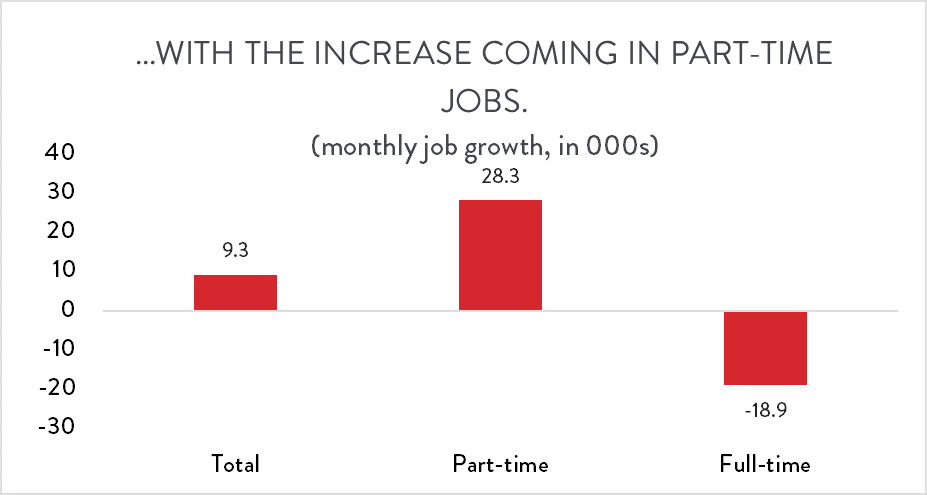
Wage Growth
Historically tight labour markets may finally be translating into higher wages for Canadian workers. One of the remarkable features of the contemporary job market is that even though employment growth has been solid, the unemployment rate is at historic lows, and businesses are reporting significant difficulty finding the workers they need, those factors have not translated into a generalized bidding war for the talent that’s available. Year-over-year wage growth had been steadily declining since June but ticked back up in December. Average hourly wages in December were about 2.9 per cent higher than they were 12 months ago.
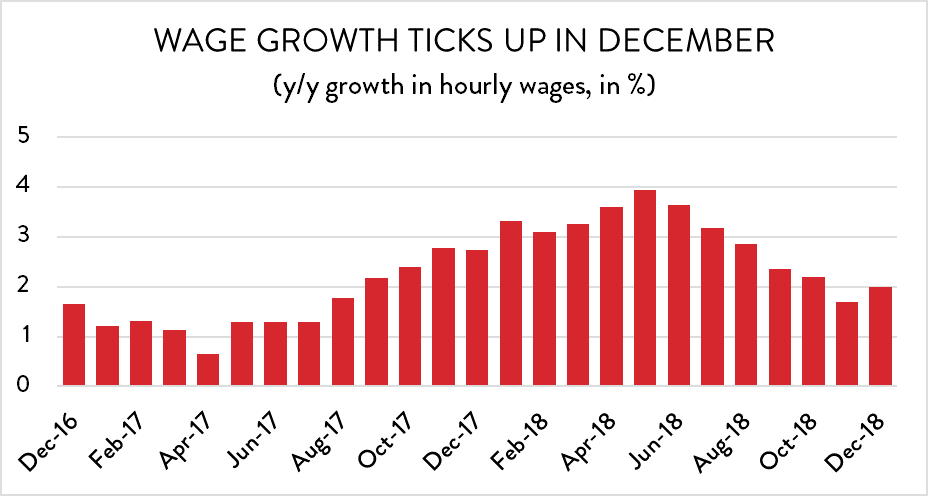
Ontario Gains and Alberta Losses
Provincially, the labour market story was about modest employment gains in Ontario offsetting losses in Alberta. There were 17,600 new jobs created in Canada’s largest province in December – an increase of about 0.2 per cent. Employment in Ontario has been rising steadily since August but remains below an unusual spike in July. Meanwhile, the Alberta economy gave back most of its strong November gains, losing 16,900 jobs after creating 23,700 positions a month earlier.

Elsewhere, results were mixed. The strongest showing was in Newfoundland and Labrador, where employment jumped by 1.2 per cent, erasing two months of decline. Nova Scotia also had a strong month, while there were smaller increases in Quebec, BC and Manitoba. On the negative side, employment was down sharply in PEI and New Brunswick.
Manufacturing Drives December Job Gains
The news at the industry level was also mixed. Of the 16 broad industry groupings, nine posted higher jobs numbers in December, with declines in the remaining seven. Easily the largest increase was in manufacturing, where businesses added 23,900 net new jobs last month. Those jobs were complemented by solid growth in related industries; there were 14,700 new jobs created in transportation and warehousing in December. On the negative side, there was a notable decline in wholesale and retail trade employment, where 26,100 jobs were eliminated. Public service employment also fell sharply in December. Although the timing doesn’t quite match up, this may be a holdover effect from Canada Post’s rotating strikes; the decline was noticeable in several provinces.
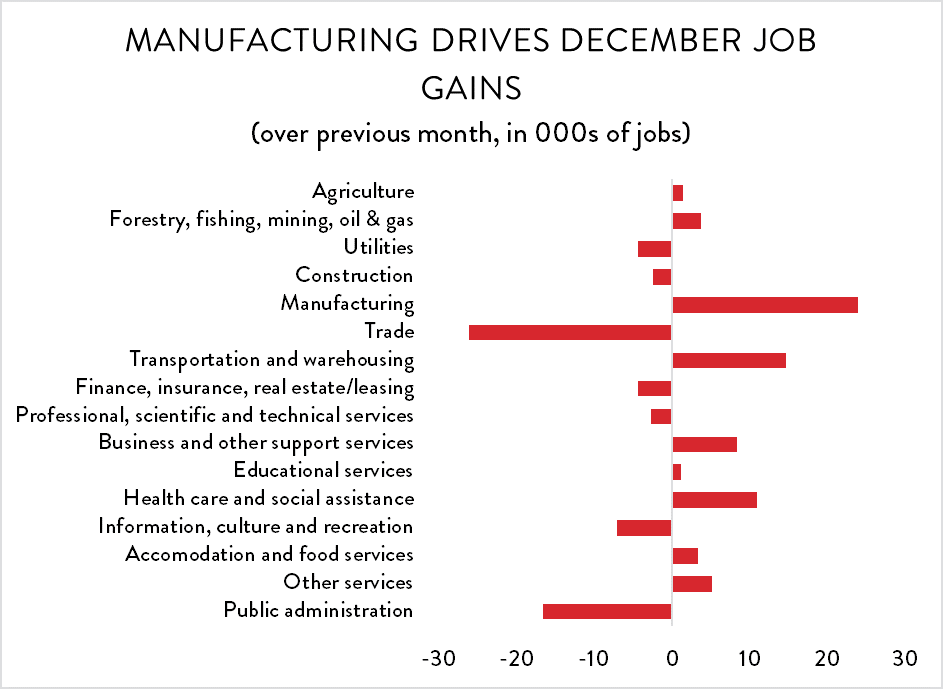
Manufacturing Sector Labour Market
As noted previously, December was a solid month for manufacturing employment. After peaking in January, the sector had been steadily losing jobs through to August, at which point the bleeding stopped and employment numbers had been holding steady. The gain of 23,900 net new manufacturing jobs in December helped erase some of the declines earlier in the year, driving overall employment up to 1.74 million – its highest level since April.

Higher than average wage pressures
Oddly, the surge in manufacturing employment came at the same time as manufacturing labour markets loosened up. The unemployment rate in the sector had been sitting at 3.3 per cent for each of the previous two months, but it jumped to 3.9 per cent in December – its highest level since April 2017.
Manufacturing wages also held steady in December but because of a drop 12 months ago, year-over-year wage growth increased from 3.4 per cent to 3.8 per cent. That still represents much higher-than-average wage pressure though; average wages for all jobs across the country are growing at about 2.0 per cent, year-over-year.

Manufacturing Employment
With the exception of the Maritime provinces, manufacturing employment was up all across the country. Leading the way was Ontario, which added 9,300 new jobs – an increase of 1.3 per cent compared to November. Even with those gains, however, there are still 20,700 fewer manufacturing jobs in the province compared to the beginning of the year. It was also a good month for manufacturing workers in Alberta, where the province added 6,100 new jobs, driving sectoral employment up to its highest level in three years. Manitoba and Quebec also enjoyed significant job growth in manufacturing to close out the year.
